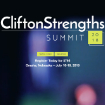What's up, Watson
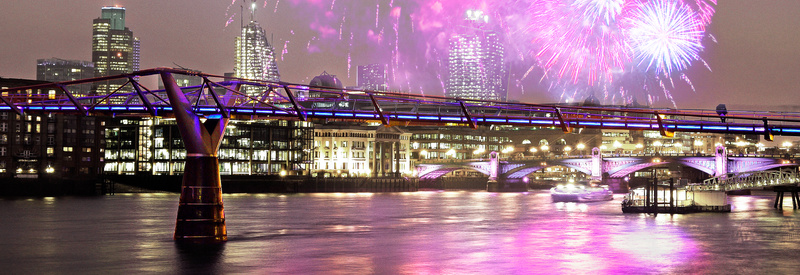
The curious case of London’s Millennium Bridge
Who doesn’t love a good mystery? The investigative spirit is in our bones at PLASTARC, and we can’t resist the pull of good detective tale. So don your cloth cap and head to this month’s "On Our Minds", where we recount a genuine design conundrum that might’ve stumped the great Sherlock Holmes himself!
On our minds
"There is no branch of detective science which is so important and so much neglected as the art of tracing footsteps." - Sherlock Holmes, A Study in Scarlet
The Bard of Baker St. would’ve delighted in this tale. Eighteen years ago this month, London marked the turning of the century with the opening of the Millennium Bridge, a strikingly-designed pedestrian span in the heart of the city. It was the first new bridge built across the Thames in 100 years. The opening was celebrated with fireworks.
Two days later, the bridge was abruptly closed. As soon as the public began using it, the span had begun to sway, raising safety concerns. Fascinatingly, there didn’t appear to be any engineering or design-related cause, yet the sway was unmistakable. The project was built with public money, and the reaction of locals was, shall we say, less than favorable. It didn’t help that another project, the Millennium Dome, had also attracted significant controversy.
The game was afoot
As chance would have it, PLASTARC founder Melissa Marsh had just begun working in London a few days before, interning with ARUP as part of her architecture studies at MIT. ARUP was the lead engineering firm on the bridge. Along with lead designer Foster + Partners, they were charged with explaining the mysterious oscillations. Marsh quickly found herself part of the investigative team.
The design was checked, and checked again. There were no flaws in the construction or materials, and there was no wind or other natural force that could explain the phenomenon. This was what Sherlock would’ve called "a three pipe problem". It must have something to do with the people on the bridge, but what? The movements of a large group of people are essentially random. Random forces wouldn’t cause the movement.
You know our methods, Watson
As we wrote last year, "elementary" science is the place to start any investigation. The team decided to try to recreate the sway in a controlled experiment, and put out the call for volunteers. They took careful measurements of each volunteer’s weight, and equipped each with a way to record their footfalls. Then they had them walk back and forth in every configuration they could think of—bunched together, spread out evenly, or asymmetrically arranged. As the volunteers walked, the team collected data. The recorded footfalls were then synchronized and compared with measurements of the sway. This was still nearly a decade before we were all carrying sophisticated computers in our pockets, so analyzing the data was painstaking work.
Once you eliminate the impossible…
They discovered that the sway was caused by a surprising combination of human factors. When people walk in a crowd, they tend to take shorter steps so as not to step on the heels of people in front of them. The extra energy from these abbreviated steps has to go somewhere, and gets transferred from their hip to the walking surface. People in a crowd also tend to synchronize their steps over time. Once this synchrony started the oscillation of the bridge, people adjusted their gait to match the lateral movement, like one might on a ship, kicking off a feedback loop.
The bridge was eventually fixed, of course. Taylor Devices, a manufacturer based in upstate New York, provided dampers that absorbed the energy of the steps. The span was re-opened in 2002 and remains a popular attraction today. The bridge’s designers were not found liable because no one had seen anything like this before. The solution to the mysterious case of the wobbly bridge was published in Nature (paywall). However, our story doesn’t end there.
No mere trifles
Here it was; proof that social and behavioral sciences, which are sometimes thought of as "soft", are in fact anything but. A combination of human psychology and physiology had a major and unexpected impact on the outcome of this project. It caused Marsh to wonder what else designers and architects might be missing when they overlook human factors.
On returning to the US to finish her studies, Marsh decided to investigate further. She took extra classes in social sciences to ensure people in all their complexity would always be at the center of her work. She’d later go on to help found the Social Sciences and Architecture Committee of AIA — and of course, PLASTARC — dedicated to the proposition that social sciences have critical impacts on design outcomes. Human behavior and experience should be primary design inputs in the same way that structural engineering is.
From the archives
Take a stroll through your mind palace! Back in June of 2016, the AIANY Social Science & Architecture Committee presented this discussion about the importance of including social science in architecture curricula.
The Millennium Bridge has been part of PLASTARC’s story since the beginning. We spoke about it with CoreNet Leader in 2014, and enjoyed sharing it with friends and colleagues at the SMPS Leadership lunch in 2015.
In Case You Missed It
Here’s a sampling of what we’ve been up to recently.
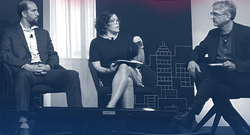
Catalyst: How Owners Can Progress the Urban Landscape
How Owners Can Progress the Urban Landscape At this conference hosted by Convene and Honest Buildings, PLASTARC Founder Melissa Marsh appeared on a panel on using data to make real estate decisions.
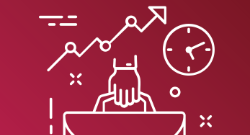
CoreNet Showcases Workplace Performance
In this podcast, PLASTARC chats with Chris Hallas of Comfy about using real-time data to improve the operation of spaces.
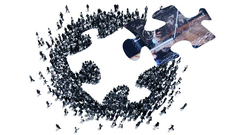
Embracing Your Whole Self in the People-centric Workplace
We wrote in Work Design Magazine about the benefits of a workplace culture that enables people to be their fullest selves.
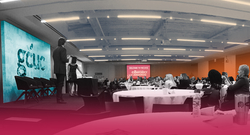
GCUC NYC 2018
From panels and workshops to space tours, this conversation about how coworking is changing the world of work and workplace has become one of our favorites.
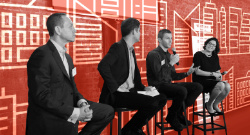
WORKTECH18 NYC
PLASTARC spoke about established companies adopting the community-focused practices of startups, and heard from other leaders in workplace and tech.

Mozilla Announces New Grants for AI Art and Advocacy
The tech company will award $225,000 in funding to art and advocacy projects that help people understand the effects of artificial intelligence on society.
Looking Ahead
Sherlock drew his brilliant deductions from a vast body of knowledge across disciplines. Here’s where you’ll find us in the near future, preparing for our next case.






